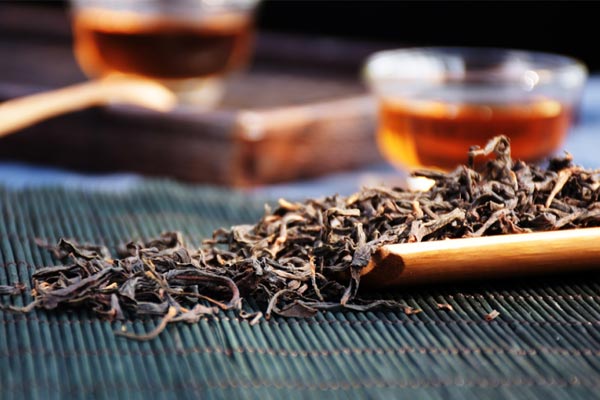When it comes to ancient tea trees, many tea lovers associate it with its rich flavor and rarity. But did you know? These tea trees, over a century old, actually possess a unique chemical code.
A research team from the Tea Research Institute and the Chinese Academy of Agricultural Sciences published a paper in the journal Food Chemistry titled "Identification and Analysis of Specialized Metabolites, including 1,2-Di-0-Galloyl-(4,6-(S)-Hexahydroxydiphenoyl)-β-p-Glucopyranose, in Ancient Tea Plants from Yunnan, China." This research reveals the metabolic secrets of ancient tea trees from the Lancang River Basin in Yunnan, demonstrating that they are not only delicious but also possess unique health benefits.

◆ Research Results
01. Characteristic Metabolites of Ancient Tea Trees
The 26 ancient tea trees studied were sourced from four villages in the Lancang River Basin in Yunnan. The trees are all over 100 years old, with trunk diameters exceeding 20 cm.
This area is the origin of Yunnan's large-leaf tea varieties. The triangular climate and complex terrain have allowed the ancient tea trees here to retain more pristine metabolic characteristics, making them ideal for research.
The researchers also used three conventionally cultivated tea varieties (FQ, YK1, and YK10) as controls. These trees grew in the same area and were cultivated using standardized methods. This allowed the differences between the two to further illustrate the uniqueness of the ancient tea trees.
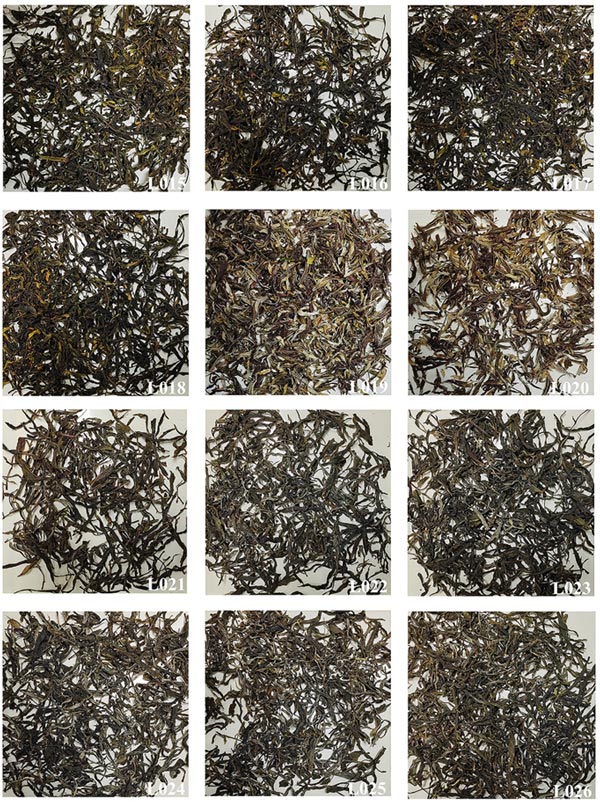
Selected Ancient Tea Samples
After converting all samples into green tea, the researchers used UPLC-qTOF-MS/MS and other techniques to scan the metabolites in the samples. They discovered two key "special metabolites" in the ancient tea trees.
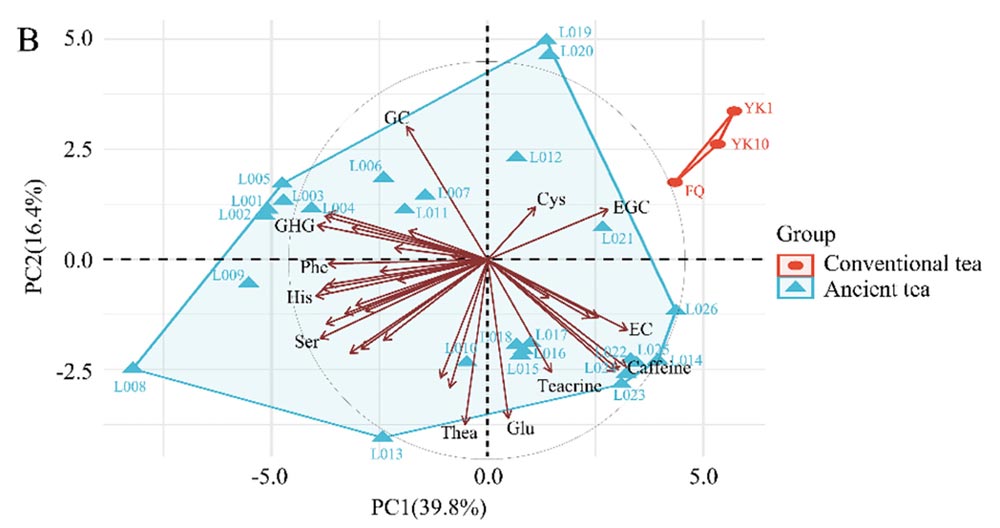
Differences in Metabolic Profiles Between Ancient and Cultivated Tea Trees
One is called GHG (1,2-di-O-galloyl-(4,6-(S)-hexahydroxydibenzoyl)-β-D-glucopyranose). Research has found surprisingly high levels of GHG in some ancient tree teas. Sample No. 5 (L005) contained a whopping 228.28 mg/g of GHG, 2.61 times higher than the highest value previously reported in the literature!
Studies have shown that this compound can inhibit histamine release, reduce allergic reactions, possess significant antioxidant properties, and even enhance liver fat metabolism.
Another substance, 5-O-galloylquinic acid, has antibacterial properties and can also help alleviate allergies.
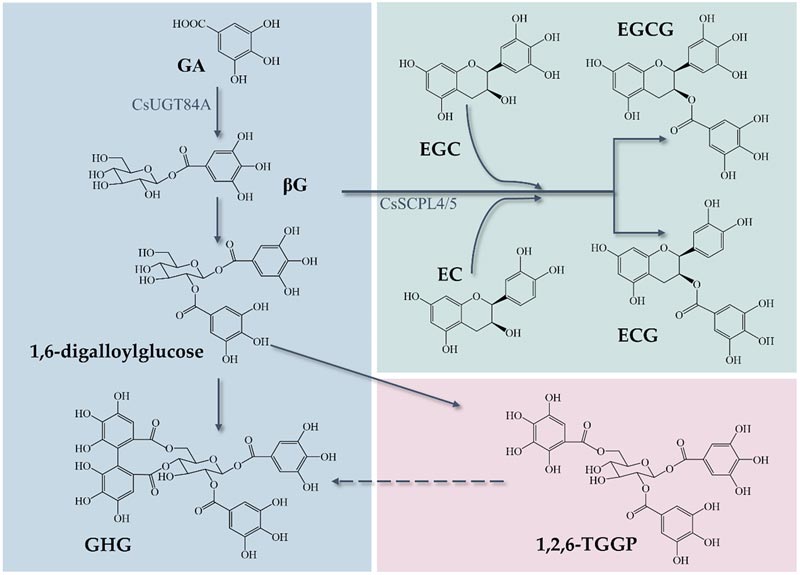
Speculating on the possible metabolic pathways of GHG
Interestingly, the accumulation patterns of these two compounds are highly consistent. That is, ancient tree teas with high GHG content (such as L001-L005 and L008-L009) also contain high levels of 5-O-galloylquinic acid, and vice versa.
This suggests that they may originate from similar metabolic pathways, contributing to the "active signature" of ancient tree teas.
02. The Taste Secret of Ancient Tree Tea
In addition to the two unique substances mentioned above, the reason ancient tree tea is "neither bitter nor astringent, but fresh and mellow" is because several key "taste-related components" are superior to cultivated tea trees.
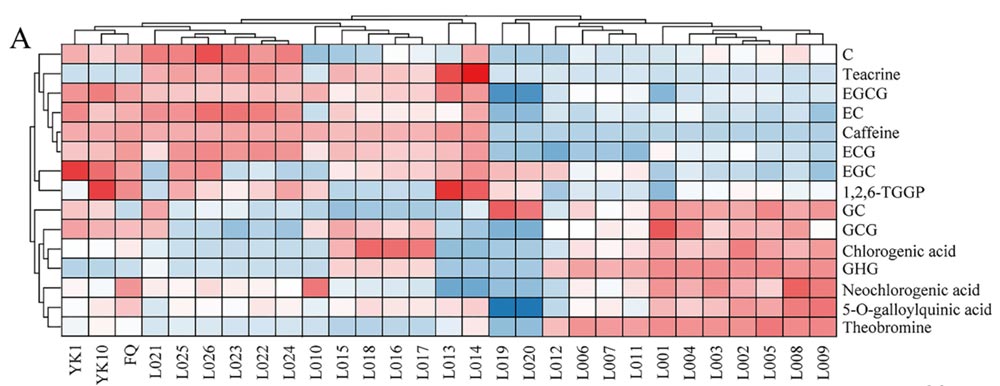
Catechin and caffeine content differs between cultivated and ancient tea trees.
First, ester-type catechins (such as EGCG and ECG) are the primary contributors to tea's bitterness. Ancient tree tea is less bitter because it contains fewer ester-type catechins.
Research has found that the EGCG+ECG content in ancient tree tea is only 3.36-23.18 mg/g, while cultivated tea can reach 103.56-124.40 mg/g.
Without these bittering compounds, ancient tree tea is naturally more palatable, making it more palatable even for non-teachers.
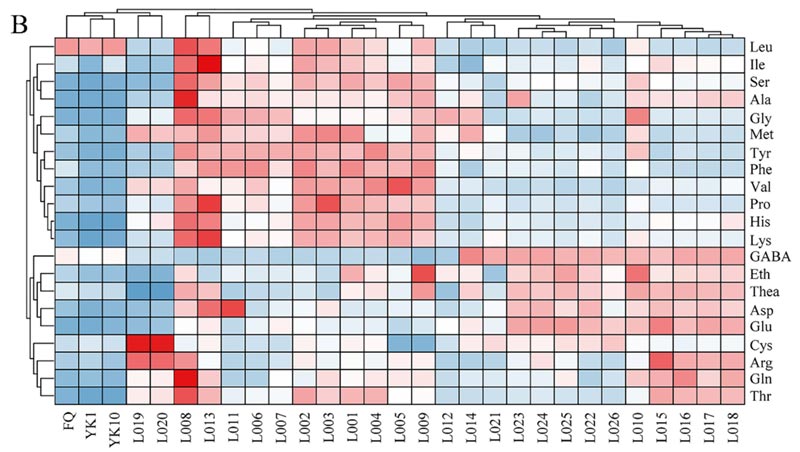
Amino acid content differs between cultivated and ancient tea trees.
Second, tea's "freshness" primarily comes from theanine. Ancient tree tea is high in theanine, resulting in a refreshing and full-bodied flavor.
Research has found that ancient tree tea samples, such as L008-L010 and L017-L018, have significantly higher theanine levels than those from cultivated tea trees.
Theanine not only enhances the taste but also mitigates the stimulating effects of caffeine, making drinking ancient tree tea less stressful. This is one reason many people find ancient tree tea so enjoyable.
Finally, while cultivated tea trees generally have slightly higher caffeine levels, some ancient tree teas (such as L001-L009 and L011-L012) have lower caffeine levels and higher theobromine content.
This shift in the ratio allows ancient tree tea to retain a certain refreshing effect without causing discomfort to sensitive individuals due to the high caffeine content, making it more widely suitable.
◆ Conclusion
The value of Yunnan ancient tree tea has never been solely due to the age of the trees. This study uses scientific data to demonstrate that these century-old tea trees have evolved a unique metabolic system over their long growth.
The high content of active ingredients and the more palatable ratio of ingredients make it both delicious and promising.
With further research into these metabolic treasures, ancient tea trees may bring us even more surprises.

%20--%3e%3c!DOCTYPE%20svg%20PUBLIC%20'-//W3C//DTD%20SVG%201.1//EN'%20'http://www.w3.org/Graphics/SVG/1.1/DTD/svg11.dtd'%3e%3csvg%20version='1.1'%20id='图层_1'%20xmlns='http://www.w3.org/2000/svg'%20xmlns:xlink='http://www.w3.org/1999/xlink'%20x='0px'%20y='0px'%20width='256px'%20height='256px'%20viewBox='0%200%20256%20256'%20enable-background='new%200%200%20256%20256'%20xml:space='preserve'%3e%3cpath%20fill='%23FFFFFF'%20d='M194.597,24.009h35.292l-77.094,88.082l90.697,119.881h-71.021l-55.607-72.668L53.229,232.01H17.92%20l82.469-94.227L13.349,24.009h72.813l50.286,66.45l58.148-66.469V24.009z%20M182.217,210.889h19.566L75.538,44.014H54.583%20L182.217,210.889z'/%3e%3c/svg%3e)



